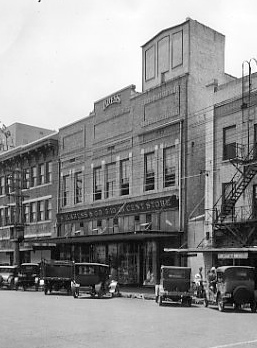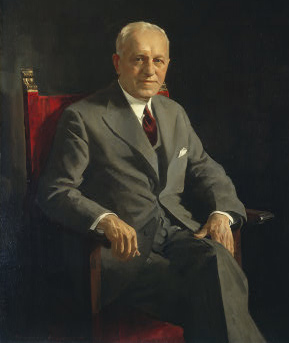|
Samuel H. Kress wasn't from Tampa, but his European tastes and nationwide philanthropy took him to many more places than just early 20th-century Florida.
Kress' name adorns one of Tampa's most recognizable and ornate downtown landmarks, but like many historic buildings, it sits unused and decaying.
With its bronze marquees, coats of arms and Renaissance Revival terra-cotta facades, including glazed multi-colored trim and details, the S. H. Kress building is not just another pretty face. It also has a fire-proofed skeleton with concrete floors poured in place. Its two almost identical facades, one on the east face at Florida Avenue, and one on the west face on Franklin Street, are this building's claim to fame. The Florida Avenue face has a north side stairwell with windows facing east that makes this facade a little different from the Franklin Street side, and a bit asymmetrical.
|
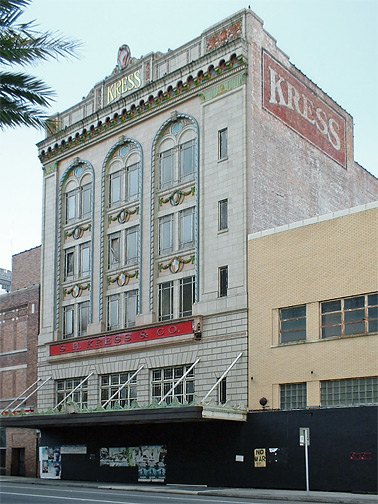 |
| This building was one of several Tampa buildings of the 1920s that enlivened the urban scenery with ornamental terra-cotta trimming. A few others were the Tampa Gas building in 1923 (gone), the Tampa Theatre Building in 1925 (saved, thankfully) and the First National Bank Building in 1926 (gone.) | |
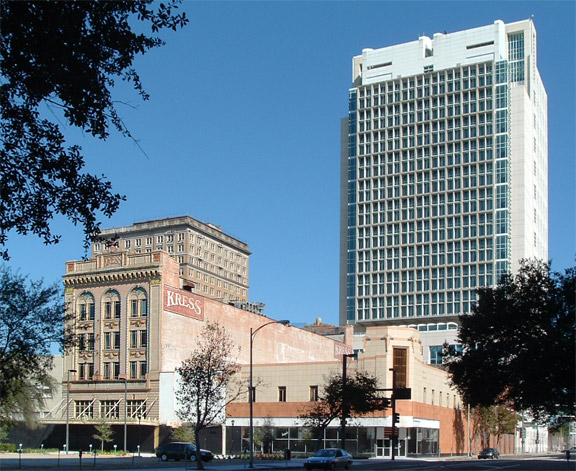 |
Located between Florida Avenue and Franklin Street, Cass Street and Polk Street, the four-story Kress building stands in stark contrast to modern Sam Gibbons Federal Courthouse skyscraper across the street on Florida Avenue. |
| Above: The west face of the Kress building is on Franklin Street. The tall building is the new Sam Gibbons Federal Courthouse on Florida Avenue. Just above the Kress building you see the old Floridan Hotel, which is nearing completion of its renovation. | |
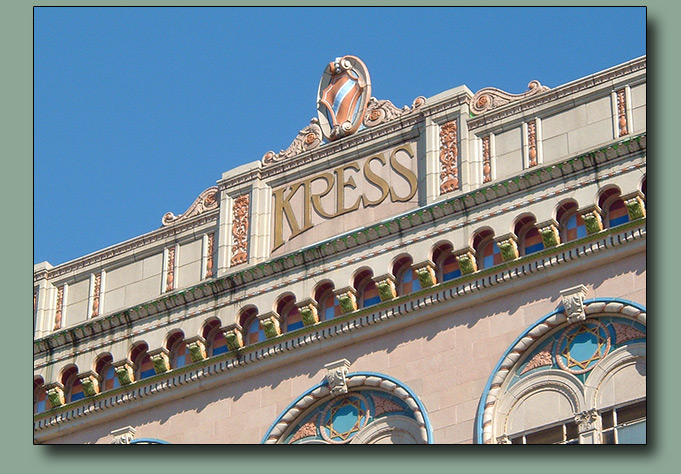
|
Kress' team of
architects designed each store to stand out - while also fitting in - on
a city's main street. Tampa's store blended with the traditional main
street look. Miami's featured pastel colors and architecture
characteristic of that city. Inside the buildings, Kress created a new
kind of shopping experience, complete with wide, heavily stocked aisles
and easy checkouts, a blueprint for modern department stores. Genesco
Inc. bought Kress in 1964. In its heyday, Kress was a five-and-dime store. But the history goes deeper than that. The owner and architect created the building as a piece of art, a symbol of old America when life bustled around main streets and malls were decades away.
|
|
|
|
Kress opened the
first Tampa store on Franklin Street in 1900. In 1908, he relocated to a
building on Florida Avenue (Photo at left, 1927)
In 1929, just before the Great Depression, he demolished the structure and replaced it with the building that stands today. |
